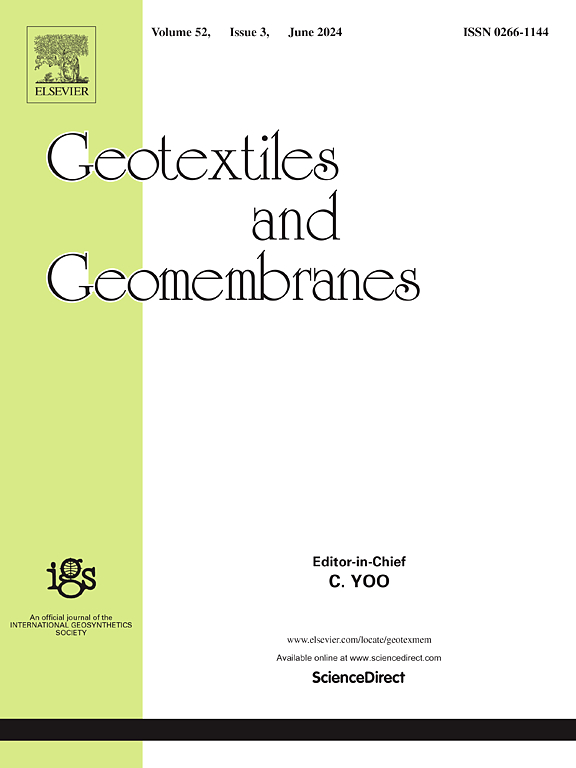Case study: Design optimization and field tests of a large geotextile mat cofferdam combined with steel sheet piles
IF 6.2
1区 工程技术
Q1 ENGINEERING, GEOLOGICAL
引用次数: 0
Abstract
A case study on a large geotextile mat cofferdam combined with steel sheet piles was conducted using field testing and numerical simulation to optimize the design and assess its performance. The failure mechanism and overall stability were investigated by numerical simulation, considering potential influence factors, including pile length, width ratio (), water level, and excavation depth. The width ratio was identified as a critical influencing factor. Specifically, an optimized ratio of demonstrated the best overall performance. When the steel sheet pile intersects the potential failure surface, the stability improvement is most significant, particularly with a length of 15 in the current case. Field tests were employed to examine the performance of the optimized cofferdam design. Water level fluctuations, surface displacements, and both horizontal and vertical displacements at various depths were monitored to assess the cofferdam’s behavior. Results from both numerical simulations and field monitoring conclusively affirm the cofferdam’s capability to meet stringent safety criterion during the construction and operational phases. This work fills gaps in standardization of large geotextile mat cofferdam design by providing guidance on geometric configuration, reinforcement integration, and soft soil risk management, thereby advancing engineering practices for similar projects.
案例研究:大型钢板桩结合土工布围堰的设计优化与现场试验
采用现场试验和数值模拟相结合的方法,对某大型钢板桩围堰进行了优化设计和性能评价。考虑桩长、桩宽比(W2/W1)、水位、开挖深度等潜在影响因素,采用数值模拟方法对破坏机理和整体稳定性进行了研究。确定了宽度比是一个关键的影响因素。具体而言,优化后的W2/W1=0.6时,整体性能最佳。当钢板桩与潜在破坏面相交时,其稳定性改善最为显著,特别是当前情况下长度为15 m的钢板桩。通过现场试验,验证了优化围堰设计的性能。监测水位波动、地表位移以及不同深度的水平和垂直位移,以评估围堰的行为。数值模拟和现场监测的结果最终证实了围堰在施工和运行阶段满足严格的安全标准的能力。通过对大型土工布围堰几何形态、加固整合、软土风险管理等方面的指导,填补了大型土工布围堰设计标准化的空白,促进了类似工程的工程实践。
本文章由计算机程序翻译,如有差异,请以英文原文为准。
求助全文
约1分钟内获得全文
求助全文
来源期刊

Geotextiles and Geomembranes
地学-地球科学综合
CiteScore
9.50
自引率
21.20%
发文量
111
审稿时长
59 days
期刊介绍:
The range of products and their applications has expanded rapidly over the last decade with geotextiles and geomembranes being specified world wide. This rapid growth is paralleled by a virtual explosion of technology. Current reference books and even manufacturers' sponsored publications tend to date very quickly and the need for a vehicle to bring together and discuss the growing body of technology now available has become evident.
Geotextiles and Geomembranes fills this need and provides a forum for the dissemination of information amongst research workers, designers, users and manufacturers. By providing a growing fund of information the journal increases general awareness, prompts further research and assists in the establishment of international codes and regulations.
 求助内容:
求助内容: 应助结果提醒方式:
应助结果提醒方式:


